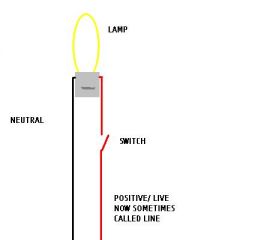Electricity has been the energy of choice for the last few decades, It is the most versatile form of energy and makes our hectic lives possible today. Without it we would have no Mobile Phones, Television, Computers or the like!
Whilst we all take Electricity for granted it requires treating with the utmost of respect as even at Mains voltage the effect can be lethal!
| Before working on any electrical circuit you must ensure that it is isolated correctly and cannot accidentally be switched back on. Please read the article on safe isolation procedures before doing any electrical work. If you are not 100% certain what you are doing call a qualified electrician. Building regulations are changing all the time and modifying your home electrics could be against new rules and could invalidate your home insurance, if in doubt check first! |
Electricity is generated at power stations, which can be Nuclear powered, Gas, Coal, Oil, Wind or even wave powered, this electricity is generated in very high voltages and is moved around the country via the National Grid to sub stations (accidents with very high voltage are normally instantly fatal, Anyone who survives will have severe burns, In addition the shock can produce muscular spasms and propel the victim some distance causing fractures! At this voltage the electricity can Ark some 18 metres, so do not approach a victim until the power has been isolated) The sub station reduces the amount of voltage using step down transformers to a voltage that can be used in the home typically - 230v +/- 10%.

The National grid supplies electricity via high voltage cables attached to pylons, this then goes to a substation where the voltage is transformed to a safer voltage
The electricity normally enters the home via a service cable which comes from the sub station via normally buried cables in the street, these cables often supply hundreds of houses and street lamps etc, sometimes these cables (especially in rural locations) will enter the house from telegraph poles. DO NOT INTERFERE WITH THE SERVICE CABLE! Electricity then enters a sealed unit which encompasses either a fuse or a RCD, sometimes there is a isolator switch which makes replacement of the consumer unit easy. Meter tails exit the sealed unit and go to the meter and from here to the consumer unit (often known as the fuse box). the householders responsibility for the electrical system starts at the consumer unit!
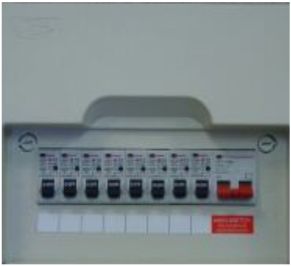
Electricity is distributed around the home by several different circuits all of which are protected by the appropriate fuse or circuit breaker. A normal consumer unit could look like this.
The large red switch is the main switch which isolates the power going to the circuit breakers or fuses, this can be located on either side of the unit. SWITCHING OFF THIS SWITCH DOES NOT ISOLATE THE POWER INSIDE OF THE UNIT, THERE ARE STILL LIVE PARTS INSIDE WHICH REQUIRE CAUTION!
Electricity will not "work" unless there is a complete circuit! Whilst most household circuits are simple, some are slightly more complicated like two way switching! If the circuit is broken or there is a break in the circuit it will not work. A typical circuit will look like this on paper, note that the live side of the circuit is switched, this is of paramount importance, you could wire a circuit to work by disconnecting the neutral but it is very dangerous. The switch must break the live supply to a circuit!
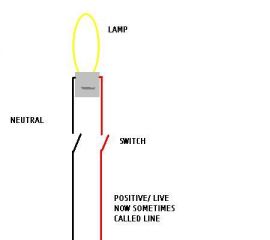
BASIC CIRCUIT (DOUBLE POLE SWITCH)
You will often come across the term "double pole" this is where both the Live wire and Neutral wire are disconnected by means of a single switch, these are common switches to be found on single circuits such as a shower or cooker. Extractor fans often use a triple pole switch which switches the live, switched live and neutral conductors at the same time.
CIRCUIT PROTECTION
All household circuits should be protected by means of a weak link, this weak link will fail when too much current is passed through it! A weak link could be either a fuse or circuit breaker of the correct amperage, also the circuit could be protected by a RCCB (residual current circuit breaker) An RCCB checks constantly to see if the Live and Neutral currents are in balance, if it detects an imbalance it switches off.
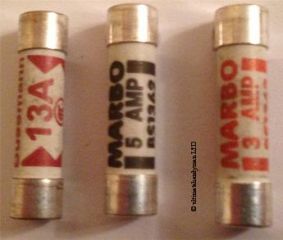
Fuses
Most people are familiar with fuses as most electrical appliances have them, there are several different types. Everyone will have seen the cartridge types that are enclosed in the plug of most appliances. Some cartridge fuses are used in consumer units, normally held in a fuse carrier, these can range from 5 amps to 45 amps depending on the circuit to be protected. Other fuses are of the re-wirable type where a piece of fuse wire is held in a fuse carrier! If a circuit Fuse blows then the circuit or an appliance on that circuit has taken too much current causing the weak link (fuse) to blow! therefore limiting damage.
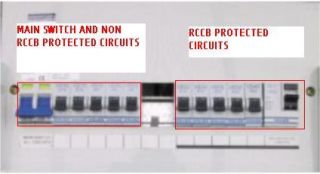
CIRCUIT BREAKERS
Circuit breakers or Miniature circuit breakers (mcb's) are today's modern equivalent to fuses, many electrical retailers no longer sell consumer units which accept fuses, such are the popularity of the circuit breaker. Circuit breakers are normally more sensitive than fuses and therefore offer more protection! On a split way consumer unit the lighting circuits are protected by just MCB's and the sockets, shower, cooker etc. are protected by the RCCB as well, this offers far greater protection to the householder than fuses used to!



